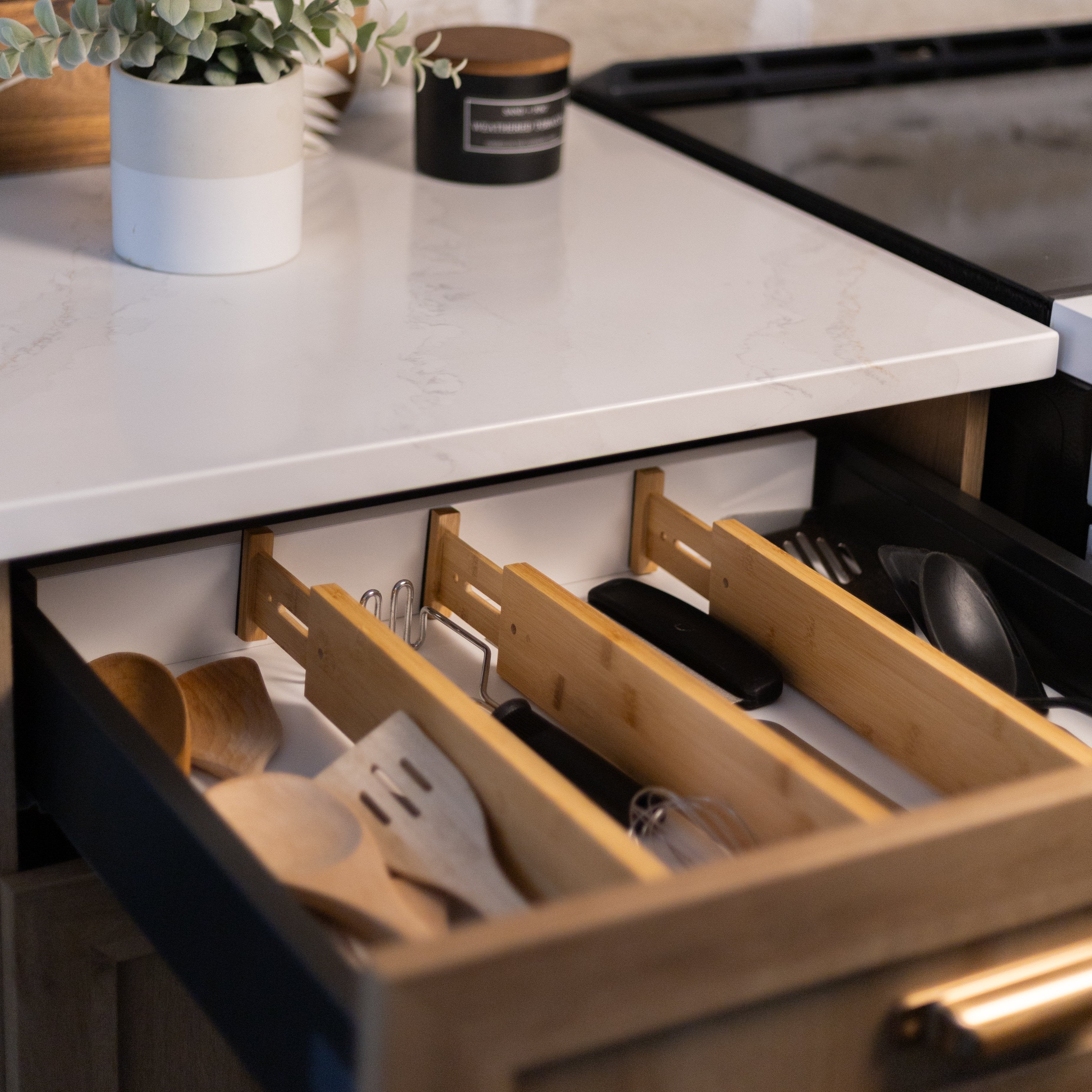Who hasn't experienced this situation: you come home exhausted after a long day, the kids are hungry, and although you've planned a chicken dish with vegetables, the idea of ordering a pizza or making pasta seems much more appealing?
Or maybe you've forgotten about your vegetables for a few days, and they've ended up in the compost bin because you haven't had the energy to use them.
In this article, I'll give you some tips on how to avoid impulsive decisions, eat better, reduce stress, limit food waste and even save quality time with your family.
#1 Optimizing your pantry: macronutrient classification
Sorting your pantry by macronutrient makes it easier to balance meals and stay organized. By grouping proteins, carbohydrates and fats in transparent bins, you save time and ensure a varied, nutritious diet every day.
Here are a few examples:
Proteins

- Pulses (chickpeas, lentils, kidney/black beans, broad beans)
- Tofu and soy proteins
- Nuts and seeds (almonds, cashews, chia seeds, hemp seeds, sunflower seeds)
- Protein powders (pea, rice, hemp, soy, whey, etc.)
- Nutritional yeast (rich in B12)
Carbohydrates
- Wholegrain cereals (quinoa, brown rice, oats, buckwheat, bulgur)
- Pastas and breads (ideally wholemeal or legume-based)
- Flours (whole-wheat, buckwheat, chickpea, almond)
- Dried fruit (raisins, dates, figs, apricots)
- Honey, maple syrup, coconut sugar
- Fruits & vegetables
Fats
- Cold-pressed quality oils (olive, camelina, coconut, avocado, canola, sunflower)
- Oilseeds (walnuts, almonds, hazelnuts, sunflower seeds, chia, flax)
- Dark chocolate (+70%)
Other
- Spices, herbs and vinegar (turmeric, cinnamon, oregano, basil, cider vinegar, balsamic vinegar)
- Broths & culinary bases: vegetable broth, miso, coconut milk, tomato paste
- Sweet and savoury snacks: dried fruit, rice cakes, popcorn, beef jerky, roasted chickpeas, chips, seed crackers, energy bars, etc.
This helps you better balance your meals by ensuring you include every type of nutrient.
#2 A well-organized fridge for better preservation
Organizing your refrigerator is just as important:

2.1 Arrange foods according to their ideal temperature:
- Top: Prepared meals + Container with dairy/vegetable products (yogurts, kefir, plant milks, cheese)
- Middle: Protein (tofu, tempeh, hummus, chicken, bison, fish)
- Bottom: Fresh fruit and vegetables (in trays to avoid humidity) or put in bins for this purpose.
- Door: Sauces & condiments (oils, vinegar, mustard, homemade sauces)
2.2 Optimum storage
- Don't overload: Air must circulate to maintain an even temperature.
- Pack food well: Use airtight containers or silicone bags to prevent them from drying out or absorbing odors.
- Place raw meats downstairs in a special tray to avoid cross-contamination.
- Put fresh herbs in a glass of water or wrapped in a damp cloth to extend their shelf life.
- Avoid putting certain fruits and vegetables in the fridge: tomatoes, potatoes, onions and avocados prefer to be stored at room temperature.
2.3 Regular maintenance
- Clean your fridge every week to avoid unpleasant odors and bacteria build-up.
- Use labels with storage dates to consume food before it spoils.
- Place a small container with baking soda or half a lemon to absorb unwanted odors.
Good organization means better meal management, less waste and longer shelf life!
#3 Organize your meal prep
3.1 Define your weekly menu
- Start with the ingredients left in your fridge to reduce waste.
- Use tools like ChatGPT or Reebee to get inspired and spot the best prices. Choose seasonal foods for better nutritional quality and lower cost.
- Plan nutritious snacks and breakfasts for the whole family.

Tip #1: Instead of planning a menu every week, start with monthly bases based on seasonal vegetables (e.g. March: carrots, mushrooms, potatoes). Make yourself a list of around twenty recipes (thanks ChatGPT!) and dip into them each week. Save time and have fun by thematizing your meals (Italian, Indian, Quebecois) to make it a family game!
3.2 Prepare and cook food in batches
- Cook meat in advance to have a source of protein ready for a busy day.
- Cut vegetables in advance for meals and snacks. This way, you'll opt for raw vegetables/fruits rather than a soft bar “because it's quicker”.
- Prepare breakfasts in advance: baked omelette, chia pudding, etc. Mornings are often rushed, and without preparation, we often end up at the drive-thru... or worse, without eating.
3.3 Put priority dishes in a dedicated area
Having a corner reserved for ready-to-eat dishes in the refrigerator makes it easier to choose meals.
Tip #2: Create a breakfast area with granola, seeds and bread to make your mornings even easier.
Tip #3: If you like smoothies, prepare bags of fruit and vegetables in the freezer. In the morning, just add milk or a plant-based drink.
Whether you're a beginner or an enthusiast, better organization can transform your relationship with food and simplify your life.
-
Text by Chanel Aubin

I'm Chanel Aubin, mom, naturopath, passionate about food and organization.
Epicurean, curious and committed, I put my love for health and nutrition at the service of those who want to eat better without stress or guilt.
Whether you're looking to optimize your diet, simplify your kitchen organization or adopt healthier habits, I'll guide you with authenticity towards a more intuitive and balanced approach.
I believe that eating well should never be a constraint. Together, we'll transform your daily routine into a nourishing experience, where pleasure and simplicity meet.
Instagram: https://www.instagram.com/lacuisinedechanel
Facebook: https://www.facebook.com/share/15SfggCPLd/?mibextid=LQQJ4d




Leave a Comment